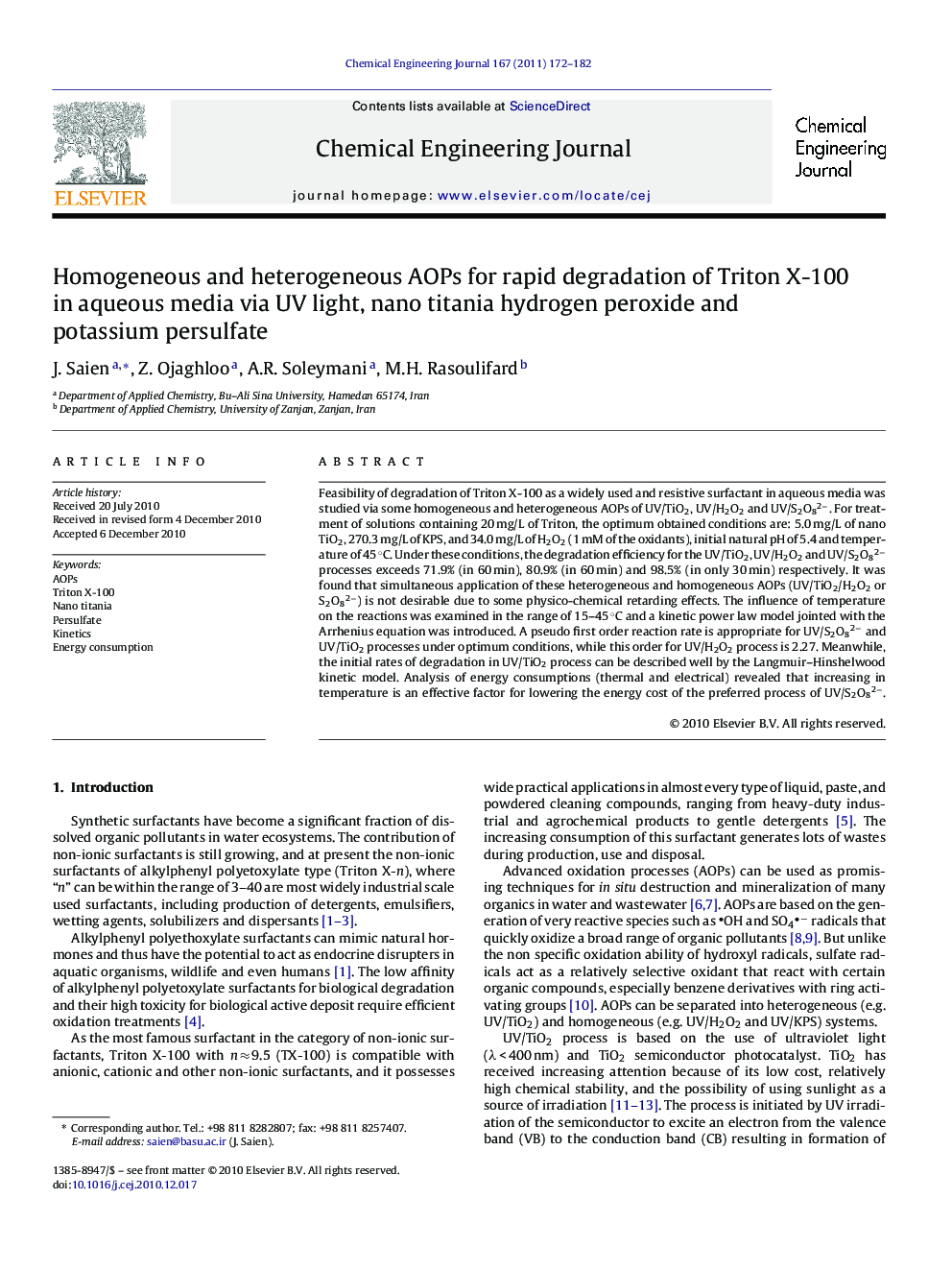| Article ID | Journal | Published Year | Pages | File Type |
|---|---|---|---|---|
| 151622 | Chemical Engineering Journal | 2011 | 11 Pages |
Feasibility of degradation of Triton X-100 as a widely used and resistive surfactant in aqueous media was studied via some homogeneous and heterogeneous AOPs of UV/TiO2, UV/H2O2 and UV/S2O82−. For treatment of solutions containing 20 mg/L of Triton, the optimum obtained conditions are: 5.0 mg/L of nano TiO2, 270.3 mg/L of KPS, and 34.0 mg/L of H2O2 (1 mM of the oxidants), initial natural pH of 5.4 and temperature of 45 °C. Under these conditions, the degradation efficiency for the UV/TiO2, UV/H2O2 and UV/S2O82− processes exceeds 71.9% (in 60 min), 80.9% (in 60 min) and 98.5% (in only 30 min) respectively. It was found that simultaneous application of these heterogeneous and homogeneous AOPs (UV/TiO2/H2O2 or S2O82−) is not desirable due to some physico-chemical retarding effects. The influence of temperature on the reactions was examined in the range of 15–45 °C and a kinetic power law model jointed with the Arrhenius equation was introduced. A pseudo first order reaction rate is appropriate for UV/S2O82− and UV/TiO2 processes under optimum conditions, while this order for UV/H2O2 process is 2.27. Meanwhile, the initial rates of degradation in UV/TiO2 process can be described well by the Langmuir–Hinshelwood kinetic model. Analysis of energy consumptions (thermal and electrical) revealed that increasing in temperature is an effective factor for lowering the energy cost of the preferred process of UV/S2O82−.
